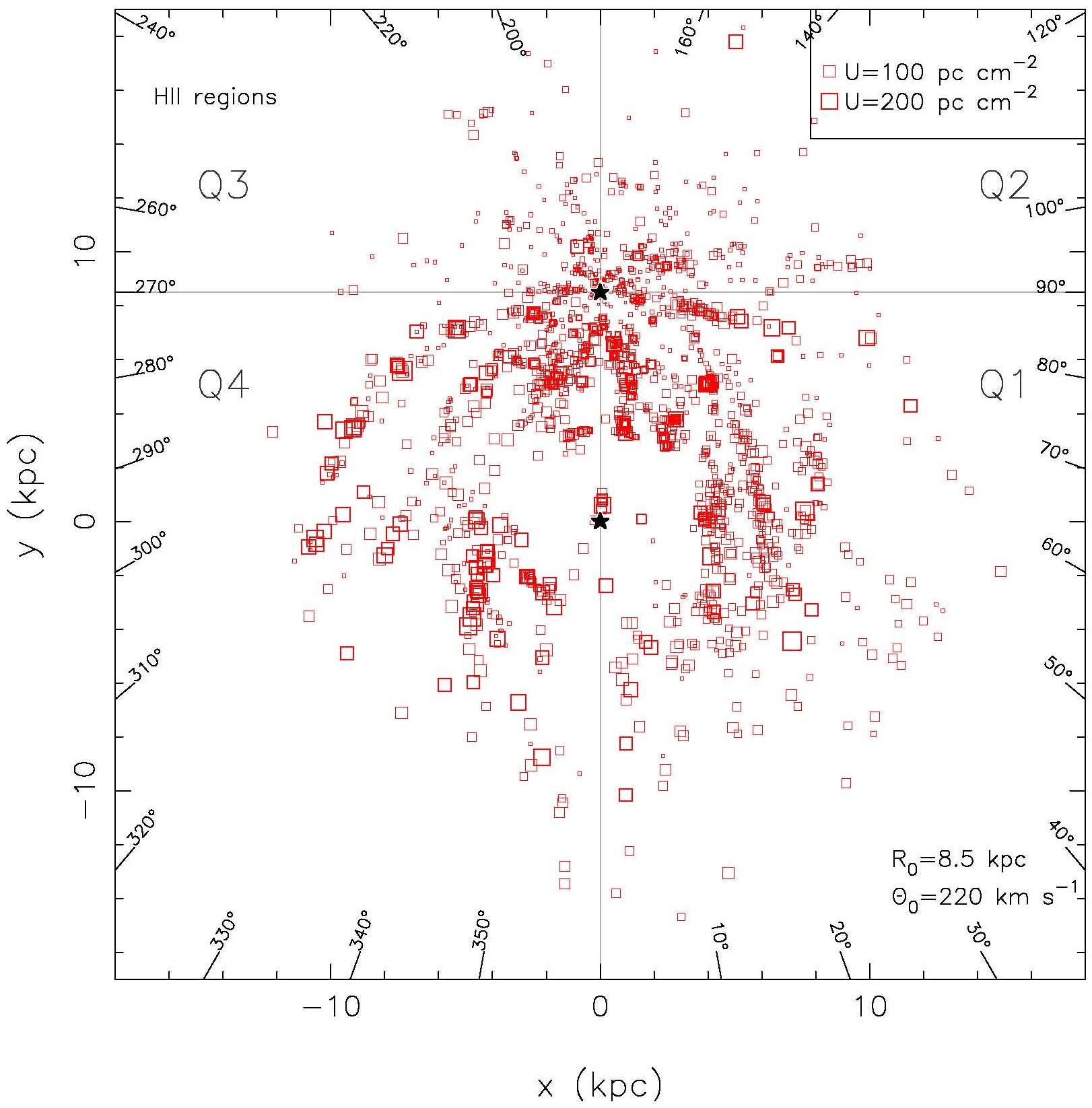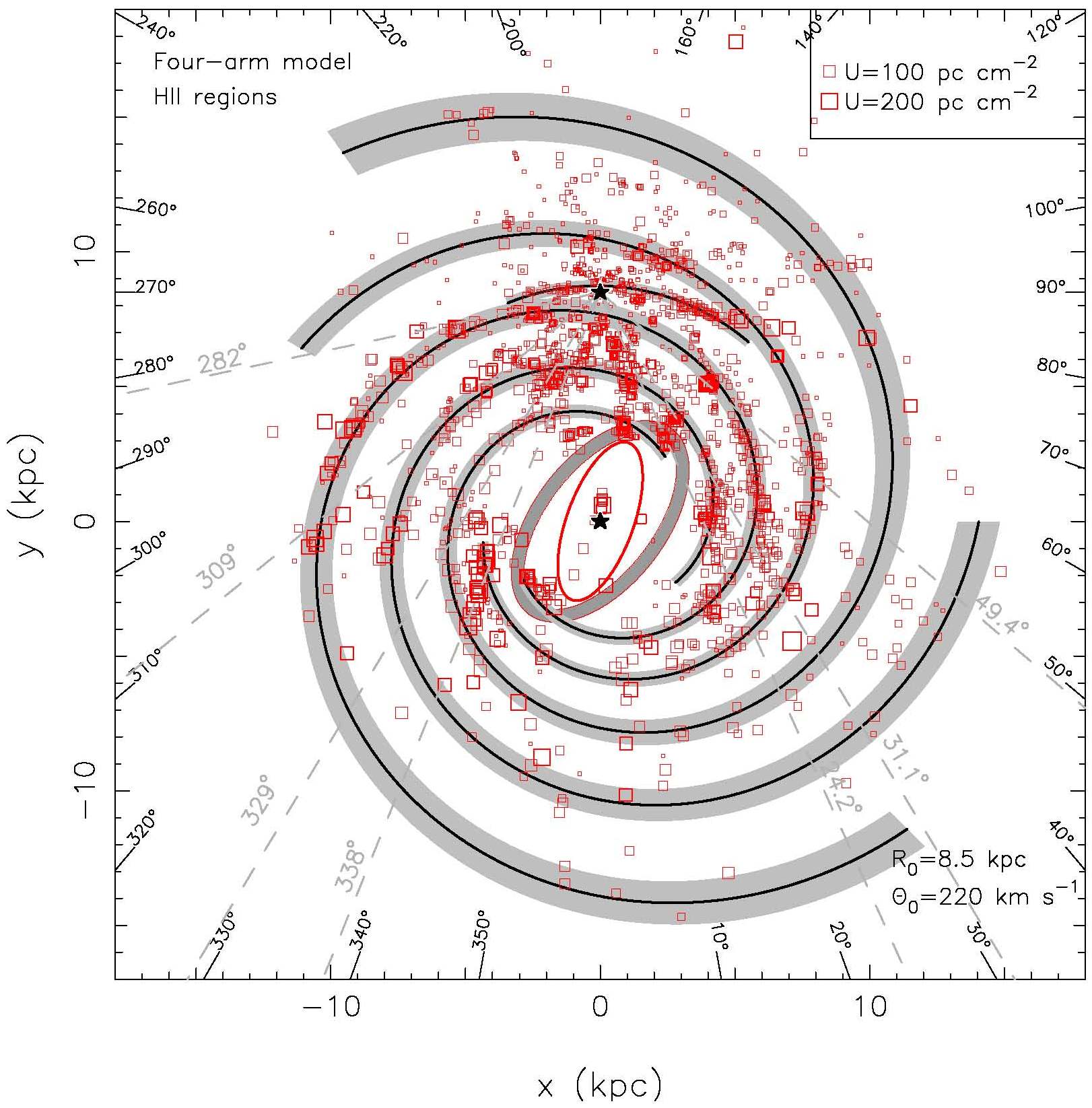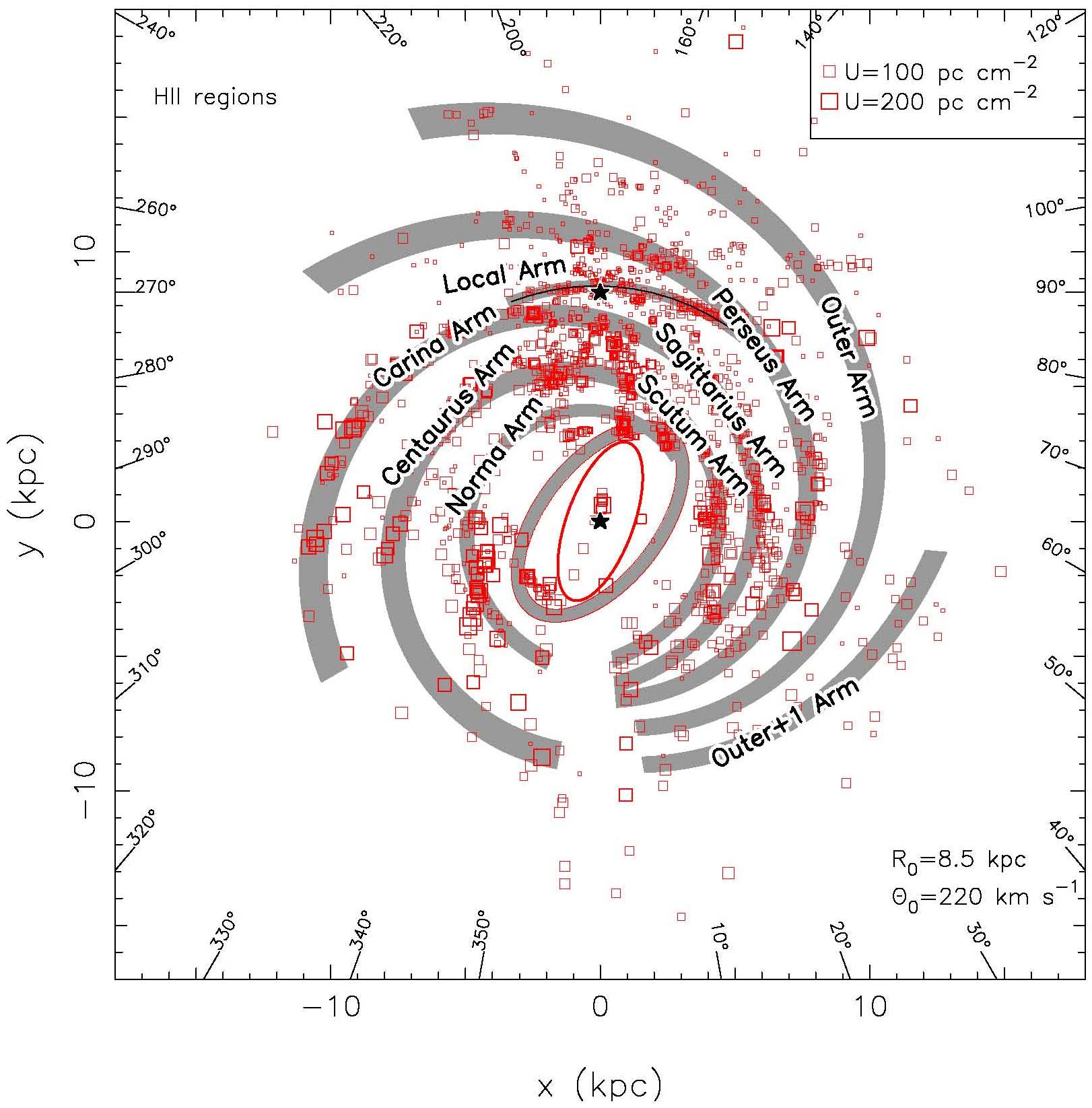The observed spiral structure of the Milky Way
|
The spiral arms of the Milky Way is not yet well determined. The keys to understanding this structure are to increase the number of reliable spiral tracers and to determine their distances as accurately as possible. HII regions, giant molecular clouds (GMCs), and 6.7-GHz methanol masers are closely related to high mass star formation, and hence they are excellent spiral tracers. The distances for many of them have been determined in the literature with trigonometric, photometric and/or kinematic methods. We updated the catalogs of Galactic HII regions, GMCs, and 6.7-GHz methanol masers, and then outline the spiral structure of the Milky Way. We collected data for more than 2500 known HII regions, 1300 GMCs, and 900 6.7-GHz methanol masers. If the photo- metric or trigonometric distance was not yet available, we determined the kinematic distance using a Galaxy rotation curve with the current IAU standard, R0 = 8.5 kpc and жи0 = 220 km/s , and the most recent updated values of R0 = 8.3 kpc and \phi_0 = 239 km/s , after velocities of tracers are modified with the adopted solar motions. With the weight factors based on the excitation parameters of HII regions or the masses of GMCs, we get the distributions of these spiral tracers. The distribution of these tracers shows at least four segments of arms in the first Galactic quadrant, and three segments in the fourth quadrant. The Perseus Arm and the Local Arm are also delineated by many bright HII regions. The arm segments traced by massive star forming regions and GMCs are able to match the HI arms in the outer Galaxy. We found that the models of three-arm and four-arm logarithmic spirals are able to connect most spiral tracers. A model of polynomial-logarithmic spirals not only delineates the tracer distribution but also matches the observed tangential directions.
The related parameters of HII regions, GMCs, and 6.7-GHz methanol masers have been collected and calculated based on the data in literature, as listed in Table A.1, Table A.2, and Table A.3, respectively. You can find README for these data files here.
We appreciate your interests on the data, and thanks for citations of:
Paper-I : The spiral structure of our Milky Way Galaxy, by Hou, L.G., Han, J.L. & Shi, W.B., 2009, A&A, 499, 473 Paper-II:
The observed spiral structure of the Milky Way, Contact: Any comments, suggestions or criticisms should direct to houlg or hjl (at)nao.cas.cn Last Modified: 2014-Oct-4th. |


